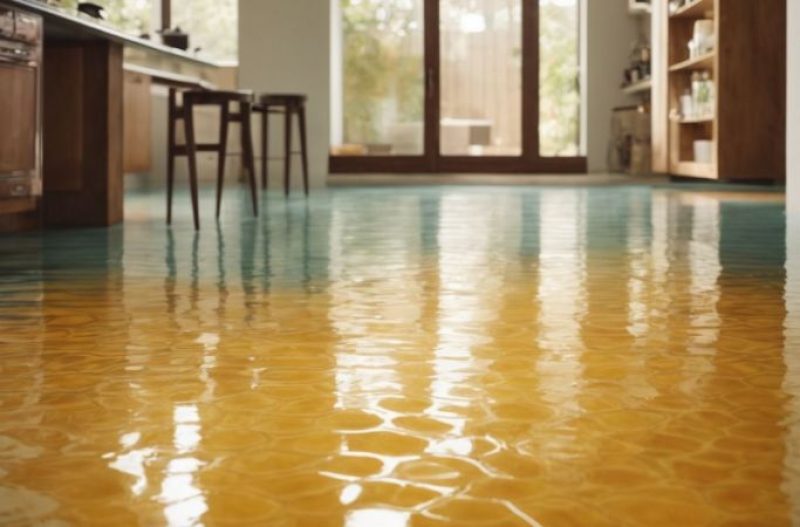Are you considering installing epoxy flooring in your home but unsure about its lifespan and maintenance? In this article, we will explore what epoxy flooring is, how it is installed, and the benefits it offers. We will also discuss the factors that affect the longevity of epoxy flooring and provide tips on how to extend its lifespan. We will highlight the signs that indicate your epoxy flooring may need replacement. Stay tuned to learn everything you need to know about epoxy flooring!
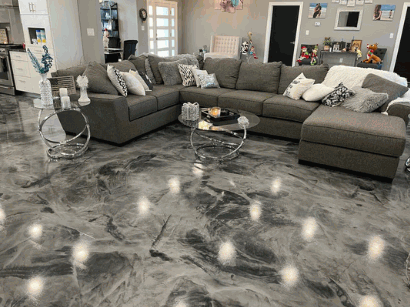
What Is Epoxy Flooring?
Epoxy flooring is a popular choice for homeowners seeking durable and aesthetically pleasing surfaces that require minimal maintenance and provide long-lasting protection.
This type of flooring is commonly used in residential settings such as garages, basements, kitchens, and even living rooms, due to its ability to withstand heavy foot traffic and resist stains.
The installation process involves preparing the existing surface by cleaning, repairing any imperfections, and applying the epoxy coating in multiple layers.
Not only does epoxy flooring enhance the overall look of a home, but it also plays a crucial role in home improvement projects by adding a layer of protection to the underlying surface, improving its durability and quality.

How Is Epoxy Flooring Installed?
The installation of epoxy flooring involves a meticulous process that ensures a seamless, high-strength surface suitable for residential and commercial spaces.
- The first step in installing epoxy flooring is surface preparation, which includes cleaning and repairing any cracks or imperfections to ensure a smooth and even base for the epoxy application.
- Once the surface is ready, the epoxy is mixed according to the manufacturer’s instructions and applied with a roller or squeegee in even coats. Proper ventilation is crucial during application to allow for adequate curing.
- The curing time typically varies based on the specific epoxy product used, so it’s important to follow the recommended guidelines. While some may opt for professional installation for a flawless finish, DIY enthusiasts can also achieve impressive results with proper preparation and application techniques.
What Are The Steps Involved In Installing Epoxy Flooring?
The installation of epoxy flooring begins with thorough surface preparation to ensure proper adhesion, followed by the application of multiple layers that require adequate curing time to achieve a high-quality finish and long-lasting protective layer.
Surface cleaning is crucial to remove any dirt, grease, or previous coatings that could hinder the epoxy’s bond. After cleaning, priming the surface with a suitable epoxy primer enhances adhesion and seals the substrate. The actual application process involves mixing the epoxy resin and hardener as per the manufacturer’s instructions, followed by spreading the mixture evenly using a roller or squeegee. Ensuring a consistent thickness across the entire floor and addressing any bubbles or imperfections promptly results in a professional-grade finish.
What Are The Benefits Of Epoxy Flooring?
Epoxy flooring offers a myriad of benefits, including exceptional longevity, unmatched durability, superior protection against wear and tear, and a visually appealing surface that enhances the overall aesthetic of the space.
The longevity of epoxy flooring is particularly notable, as it can last for many years without showing signs of significant wear. Its durable nature makes it resistant to scratches, chemicals, and stains, ensuring that the floor remains in top condition even in high-traffic areas.
In terms of protective properties, epoxy coatings create a barrier that shields the underlying concrete from damage caused by moisture, oil, and other contaminants. The glossy finish of epoxy floors adds a touch of sophistication and modernity to any environment, making it a popular choice for both residential and commercial spaces.
Durability
The durability of epoxy flooring is unparalleled, offering exceptional resistance to impacts, scratches, and heavy foot traffic, making it an ideal choice for industrial settings and high-traffic areas that demand industrial-strength surfaces.
This industrial-grade flooring solution is engineered to withstand the toughest conditions, providing a robust shield against wear and tear. Its strength lies in its seamless composition, which not only enhances its durability but also makes maintenance a breeze. Epoxy flooring’s resistance to chemicals and stains further solidifies its position as a top choice for industries requiring a reliable and long-lasting flooring solution. With its ability to maintain its pristine appearance even in the face of heavy usage, epoxy floors are a testament to the power of quality materials in creating enduring surfaces.
Easy Maintenance
Epoxy flooring is renowned for its easy maintenance requirements, as it only needs regular cleaning and care to maintain its pristine appearance, offering a virtually maintenance-free solution for homeowners and businesses.
The beauty of epoxy flooring lies in its durability and resistance to stains, making it a popular choice for high-traffic areas. With just a simple mop and gentle detergent, maintaining the glossy finish of epoxy floors is a breeze. Unlike traditional flooring options that require frequent polishing or sealing, epoxy floors retain their shine effortlessly. This hassle-free upkeep allows for a worry-free experience, ensuring that your floors remain stunning without the need for extensive maintenance efforts.
Chemical And Stain Resistance
Epoxy flooring exhibits exceptional resistance to chemicals and stains, thanks to its protective layer that acts as a waterproof barrier, making it an ideal choice for areas prone to spills and chemical exposure.
This protective layer not only enhances the durability and longevity of the flooring but also provides a seamless surface that is easy to clean and maintain. The waterproofing benefits of epoxy flooring make it a popular option for industrial facilities, laboratories, garages, and commercial spaces where spills are common. The chemical resistance of epoxy flooring ensures that harsh substances like acids, solvents, and oils do not penetrate the surface, preventing damage to the underlying concrete or substrate. This protective shield offers peace of mind knowing that the flooring can withstand the toughest conditions and maintain its quality over time.
Aesthetically Pleasing
Epoxy flooring not only provides a glossy finish that enhances the visual appeal of any space but also offers customizable design options that allow for unique aesthetic enhancements tailored to individual preferences.
The glossy finish of epoxy flooring creates a sleek and modern look, reflecting light to brighten up the room and adding depth to the overall design. This finish is not only visually appealing but also highly durable, making it suitable for high-traffic areas.
The customizable design options of epoxy flooring open up a world of creative possibilities, from intricate patterns to vibrant colors, allowing individuals to transform their spaces into personalized works of art. Whether in residential homes, commercial spaces, or industrial settings, epoxy flooring has the ability to elevate the aesthetics of any environment.
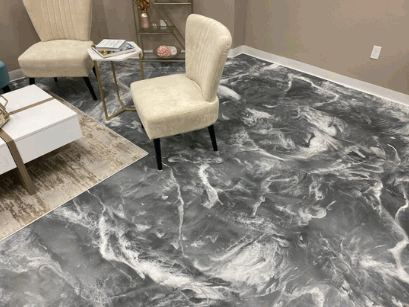
How Long Does Epoxy Flooring Last?
The lifespan of epoxy flooring can vary based on several factors, but with proper care and maintenance, it can last for many years, enhancing the property value and providing a contemporary look to the interior or exterior spaces.
- Factors such as the quality of the initial installation
- The level of foot traffic in the area
- Exposure to sunlight
- The use of harsh chemicals
All impact the durability of epoxy flooring. By choosing high-quality materials and professional installation, the longevity of the finish can be significantly extended.
Besides its durability, epoxy flooring’s ability to maintain a sleek and modern appearance over time is unmatched, making it a popular choice for both residential and commercial properties looking to enhance their overall aesthetic.
Factors Affecting The Lifespan Of Epoxy Flooring
The lifespan of epoxy flooring is influenced by factors such as wear and tear, the need for periodic resurfacing or revitalization, and adherence to maintenance practices that keep the surface looking pristine and maintenance-free.
Wear and tear on epoxy flooring can be accelerated by heavy foot traffic, frequent spills, and harsh cleaning chemicals. When the surface starts to show signs of wear, opting for resurfacing or revitalization can help restore its durability and enhance its longevity.
Regular maintenance, including sweeping, mopping, and using gentle cleansers, is crucial in preserving the appearance of epoxy flooring. Investing in surface rejuvenation treatments can revive the shine and protect the floor from further damage, ensuring a long-lasting and attractive finish.
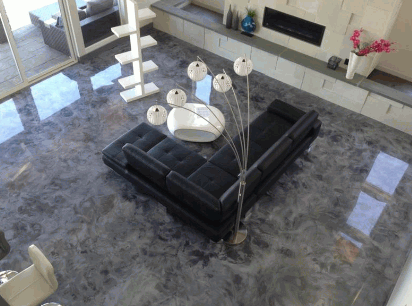
How To Extend The Lifespan Of Epoxy Flooring?
Extending the lifespan of epoxy flooring requires attention to details such as proper installation, regular cleaning, and diligent care to preserve its protective properties and keep the surface looking pristine for an extended period.
Aside from installation, it’s crucial to apply protective coatings to enhance durability and resist damage from daily wear and tear. Adopting preventive measures like placing protective pads under heavy furniture can help prevent scratches and dents.
Routine cleaning with a gentle, non-abrasive cleaner is essential to maintain the epoxy’s shine. Addressing spills promptly, using soft-bristled brooms or mops, and avoiding harsh chemicals are key practices in surface preservation.
Scheduling periodic inspections and maintenance checks can identify any issues early on, allowing for timely repairs to prolong the flooring’s lifespan.
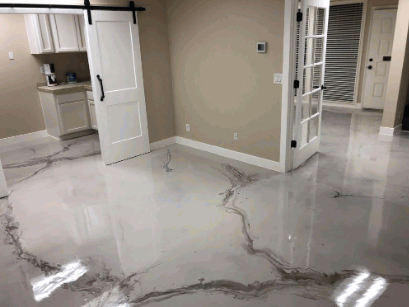
Proper Installation
Proper installation of epoxy flooring is crucial for ensuring a professional-grade finish that not only enhances the aesthetics of the space but also promotes eco-friendly practices by utilizing sustainable materials and methods.
By employing professional-grade materials and eco-friendly techniques during installation, the epoxy flooring not only achieves a high-performance surface but also contributes to a healthier indoor environment. Sustainable flooring solutions play a key role in reducing the carbon footprint of construction projects and promoting a more eco-conscious approach to design and maintenance. With proper installation methods, such as using low-VOC (volatile organic compounds) products and following eco-friendly practices, the durability and longevity of epoxy flooring can be maximized, making it a wise choice for both residential and commercial spaces.
Regular Cleaning And Maintenance
Regular cleaning and maintenance routines are essential for preserving the pristine appearance of epoxy flooring, promoting periodic reapplication to renew protective properties and enhance scratch resistance for long-term durability.
By adhering to a consistent cleaning schedule, you can prevent dirt and debris from penetrating the surface, which can lead to discoloration and wear over time. Reapplying protective coatings not only restores the shine and luster of the flooring but also reinforces its ability to withstand scratches and impacts, prolonging its lifespan. This proactive approach to surface renewal ensures that your epoxy flooring maintains its aesthetic appeal while offering increased resilience against daily wear and tear.
Find out more: How To Clean Epoxy Floor Garage
Avoiding Harsh Chemicals And Heavy Objects
To maintain the durability of epoxy flooring, it is crucial to avoid exposing the surface to harsh chemicals and heavy objects that could compromise its heat resistance and UV resistance, ensuring long-lasting performance and visual appeal.
By implementing protective measures such as using furniture pads or mats under heavy objects and promptly cleaning up spills of harsh chemicals, you can significantly extend the lifespan of your epoxy flooring. Periodic recoating with a topcoat can help enhance heat resistance and UV protection, further safeguarding the surface from potential damage and color fading over time.
What Are The Signs Of Epoxy Flooring Needing Replacement?
Identifying signs that indicate the need for replacing epoxy flooring includes observing cracks, discoloration, visible wear and tear, and other structural issues that affect the surface’s integrity and functionality.
These common indicators often prompt property owners to consider the condition of their epoxy flooring and explore options for replacement. Alongside cracks and discoloration, patterns of wear that show through the protective coating can signal underlying damage.
It’s crucial to conduct regular maintenance assessments to catch early signs of deterioration, as addressing issues promptly can prevent further damage to the flooring surface. Structural damage like chipping or peeling may not only compromise the aesthetics of the space but also pose safety risks, necessitating a closer evaluation for potential replacement.

Cracks And Chips
Cracks and chips on epoxy flooring are warning signs that necessitate refinishing or repair to maintain the surface’s structural integrity and ensure a smooth, damage-free finish that enhances the overall appearance.
When left unattended, these imperfections can lead to more significant issues such as water seepage, which may compromise the flooring’s durability. Timely refinishing solutions, like applying a fresh coat of epoxy or using filler compounds, can help prevent further damage and protect the longevity of the flooring. By addressing cracks and chips promptly, you not only safeguard the surface but also uphold its aesthetic appeal, creating a visually pleasing environment that reflects a well-maintained space.
Discoloration
Discoloration on epoxy flooring signals the need for revitalizing treatments that restore the surface’s color and shine, while also reinforcing the moisture barrier to prevent future discoloration and maintain the floor’s pristine appearance.
Restoring the original color and shine of epoxy flooring can involve techniques such as applying a fresh coat of epoxy or using specialized color-enhancing products. To effectively rejuvenate the surface, cleaning and prepping the floor are crucial steps. Integrating moisture-resistant sealants into the revitalization process acts as a protective shield against water damage and stains, prolonging the longevity of the flooring. Maintaining a regular maintenance schedule can help prevent discoloration and ensure that the epoxy floor retains its beauty and functionality.
Delamination
Delamination, where the epoxy coating separates from the underlying surface, requires immediate attention to prevent further damage and maintain the seamless surface that characterizes long-lasting epoxy flooring solutions.
This separation issue not only compromises the aesthetics of the floor but also jeopardizes its structural integrity. Addressing delamination promptly is crucial to prevent potential safety hazards and structural weaknesses. By taking swift action, such as applying suitable protective coatings or seeking professional repairs, you can safeguard the durability and longevity of the epoxy flooring. Ensuring that the epoxy coating remains securely bonded to the underlying surface is essential for preserving the functionality and appearance of the floor in the long run.
Wear And Tear
Visible wear and tear on epoxy flooring, especially in high-traffic areas like workshop floors, necessitate resurfacing procedures to revitalize the surface, address damage, and prolong the longevity of the flooring for continued functionality.
This maintenance process not only enhances the aesthetics of the flooring but also plays a crucial role in maintaining safety standards within the workplace. By addressing cracks, chips, and uneven surfaces through resurfacing, the overall durability of the epoxy flooring is significantly improved. Regular maintenance and timely resurfacing not only restore the appearance of the flooring but also prevent further deterioration, ultimately saving costs in the long run. Ensuring that the surface is properly renewed through resurfacing procedures can help businesses maintain a professional and functional environment.

